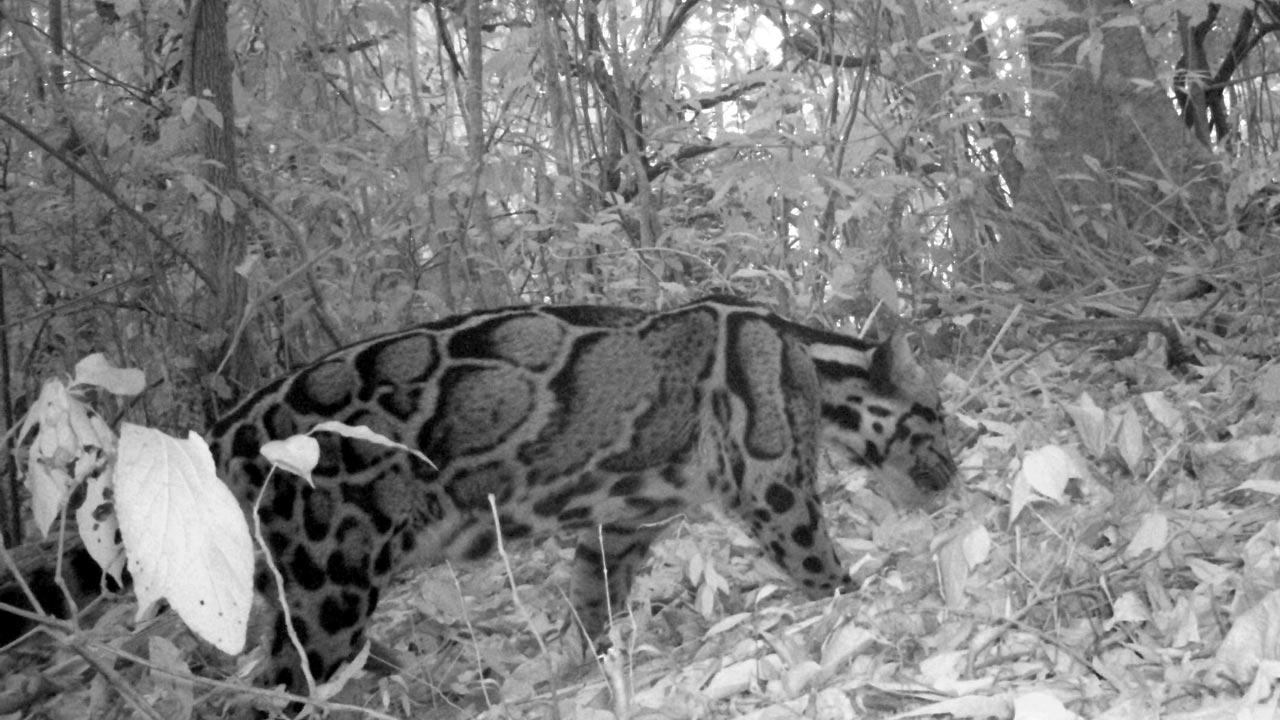A daily wage forest guard’s dedication to conservation and love for photography means that Mizoram’s Dampa Tiger Reserve has a rich ation of its wildlife, and now, the site’s first photographic record of a tiger in seven years

The image of a clouded leopard captured by a camera trap in Dampa
In November 2020, a member of the Tiger Protection Force at the Dampa Tiger Reserve in Mizoram found a pugmark along a river bank and asked Zakhuma Don to deploy camera traps. For a while, the traps only picked up evidence of common leopard cats. Since the area was in a buffer zone, Don was eventually asked to retrieve the traps for fear that they might be stolen. Early this year, a team from the Wildlife Institute of India (WII) began conducting research in the reserve and Don requested their deployment once again. It paid off.
ADVERTISEMENT
Zakhuma Don, who is part of Sanctuary Asia’s Mud on Boots project, has been documenting the reserve’s biodiversity through photos and videos, managing to capture rare animals like the clouded leopard and the hoolock gibbon. These have been used by the forest department in their outreach material
While checking the traps last month, he found the vivid image of a tiger. “I was thrilled,” he says, “this came after seven long years of tracing and camera trappings; I couldn’t believe my eyes.” He sent it to the authorities for confirmation and WII’s Department of Endangered Species Management ultimately confirmed that he had indeed photographed a tiger in Dampa.
This was special because since 2013, Dampa has not found any trace of tigers despite efforts to photograph and surveys of fringe villages around the reserve. TR Shankar Raman, senior scientist at the Nature Conservation Foundation, Mysore, says he isn’t surprised. Raman first went to Dampa in 1994-95 to conduct research. “Dampa is not like other tiger reserves in India,” he says. “Large parts of it have dense evergreen forests that are not ideal tiger habitat. This new photo reveals that tigers are definitely found there, but it is likely that they occur at a very low density.” Dampa, on the other hand, has one of the highest density populations of clouded leopards in Asia, along with other rare species like the hoolock gibbon, peacock-pheasants and blue pittas. The reserve is also part of the Indo-Burma biodiversity hotspot. “Though it is called a tiger reserve, it is special for the other species found there, which are unique to northeast India,” he informs. “A whole range of other wildlife gets protected in Dampa thanks to its notification as a tiger reserve.” This is reason enough for not all efforts to be trained towards tiger conservation alone. Forests are sometimes cut to create artificial grasslands, while prey is artificially increased in the name of tiger conservation. “That kind of habitat disturbance should not happen in Dampa.”
A few years ago, Raman was invited to conduct a bird survey at the reserve by the Mizoram forest department and met Don who accompanied him in the field. A resident of nearby West Phaileng, and a member of the protection force, Don’s stays in anti-poaching camps, along with patrolling and routine protection duties have given him an intimate knowledge of the landscape. Raman says that a host of researchers, a list in which he includes himself, have benefited from Don’s knowledge and wildlife monitoring skills, and the way he actively assists in planning and deployment. For Don, while the interest in wildlife and its behaviour has increased over the years, aided by a longstanding passion for photography, he has come to realise that the forest needs protection too, from poachers and encroachers who collect forest produce. Don has been a part of Sanctuary Asia’s Mud on Boots project designed to support grassroots conservationists.
Zakhuma Don
He has also been documenting Dampa’s biodiversity through photographs and videos. These have in turn been used by the forest department in their outreach material, presentations and calendars. Through his training with Green Hub, which engages in conservation education and climate sustainability through the visual medium, he learnt videography skills and with little to no budget and resources, even made short documentaries on Dampa, which were screened locally and shared on social media. “There has been a lot of awareness creation about Dampa and its wildlife that is attributable to his photo and video documentation,” admits Raman.
While highlighting the remarkable skills and diligence of Dampa’s forest staff who work in extremely difficult conditions, challenging terrain and remote camps, he points out that they have been working without regularisation of their employment for years. “There are members of staff who have worked for 20 years on daily wage. Zakhuma himself has worked for 13 years like this. Technically, he can lose his job anytime,” he says. Don, meanwhile, continues tirelessly to spread awareness through his conservation work.
 Subscribe today by clicking the link and stay updated with the latest news!" Click here!
Subscribe today by clicking the link and stay updated with the latest news!" Click here!






